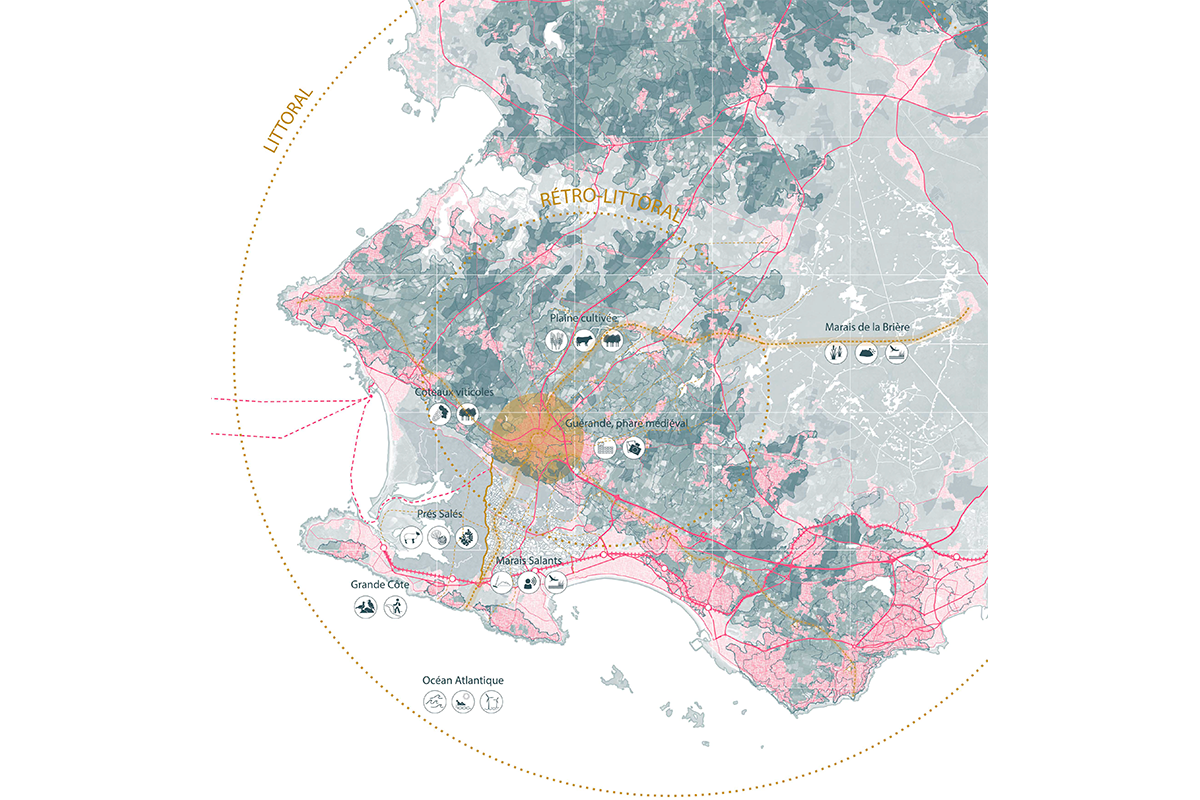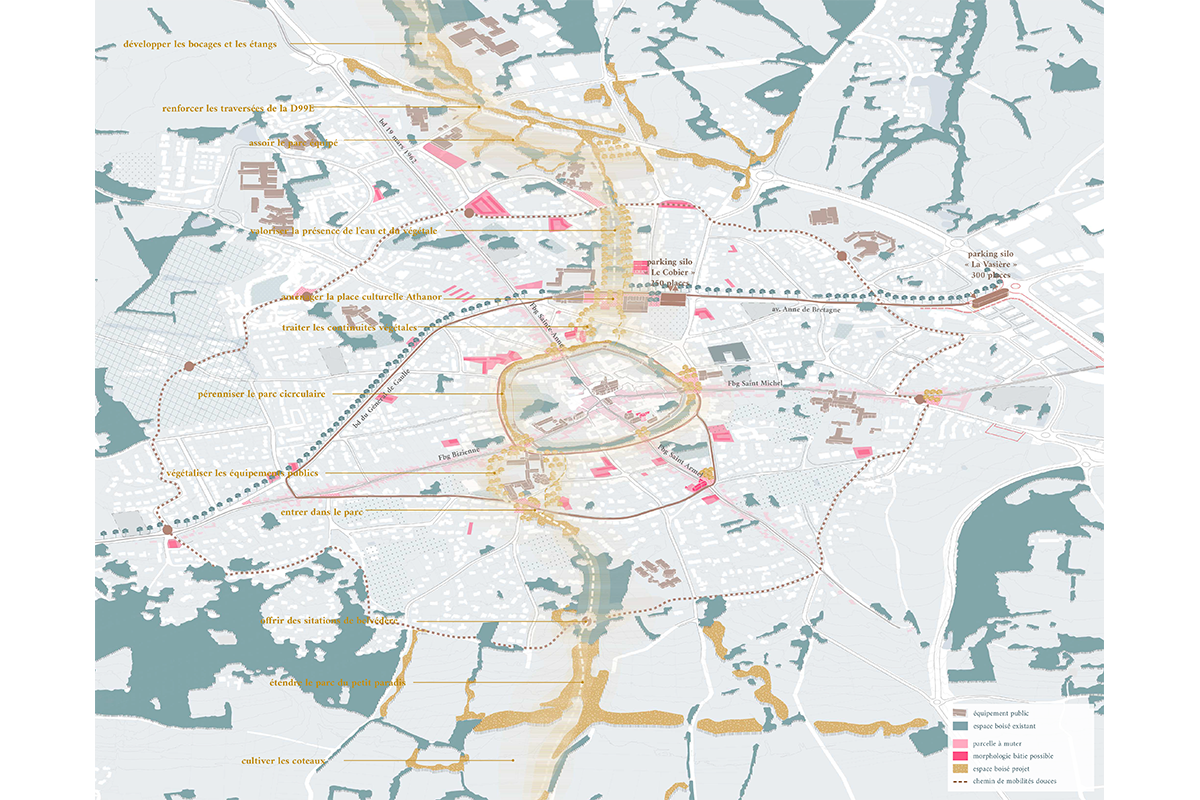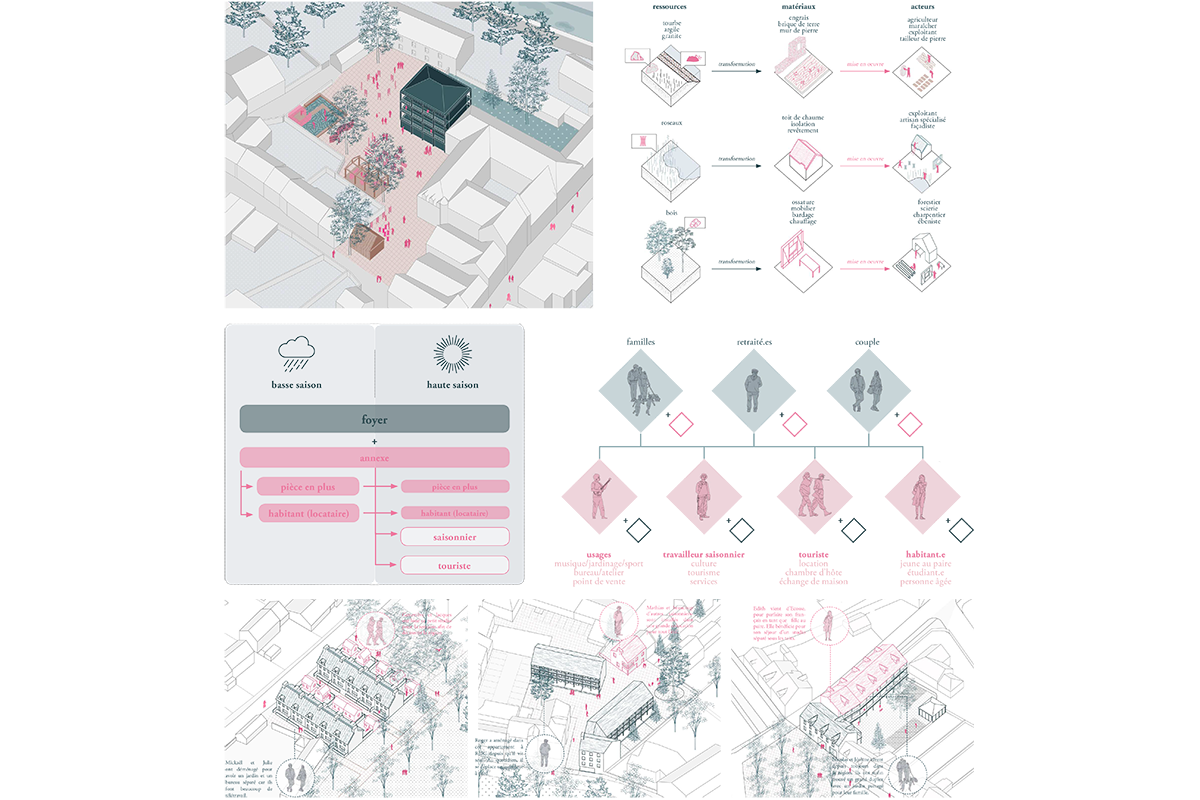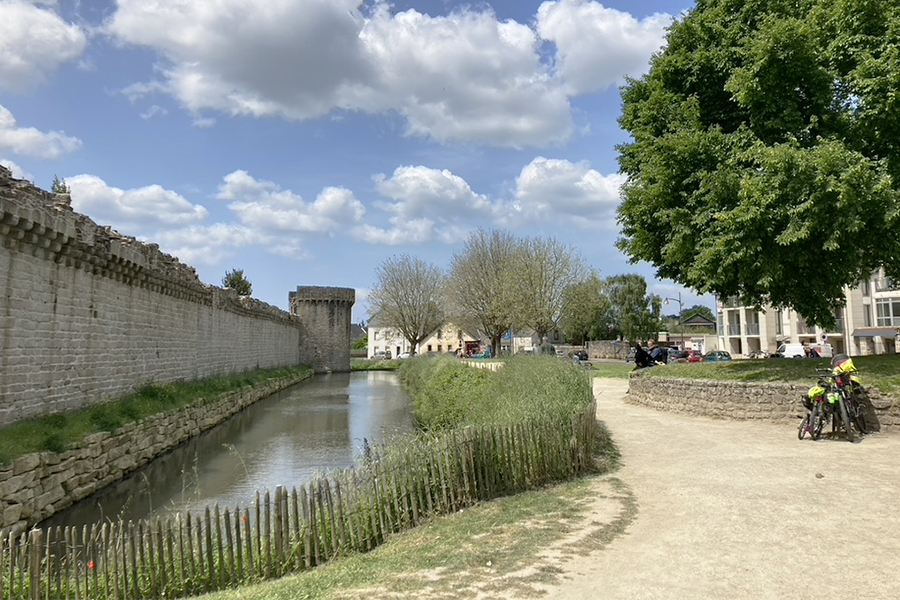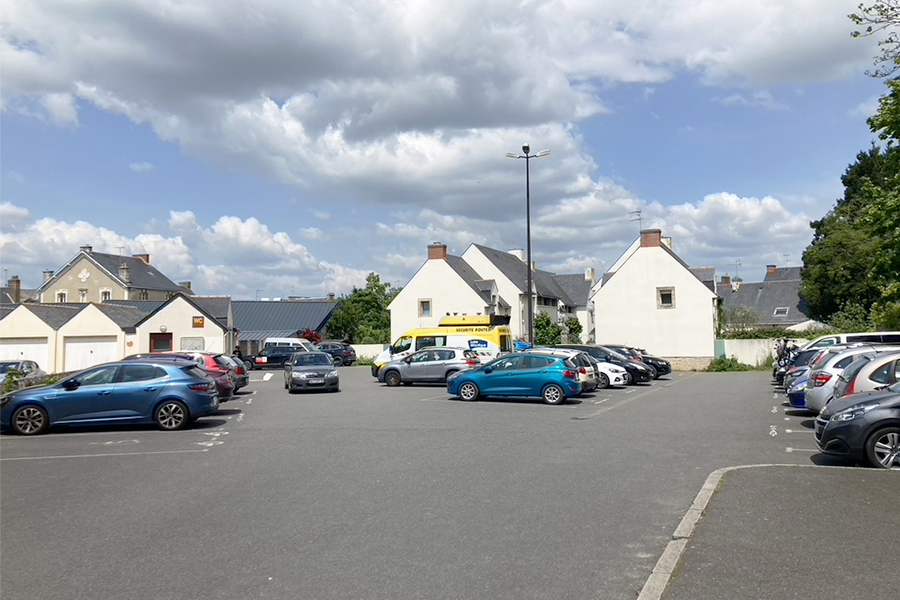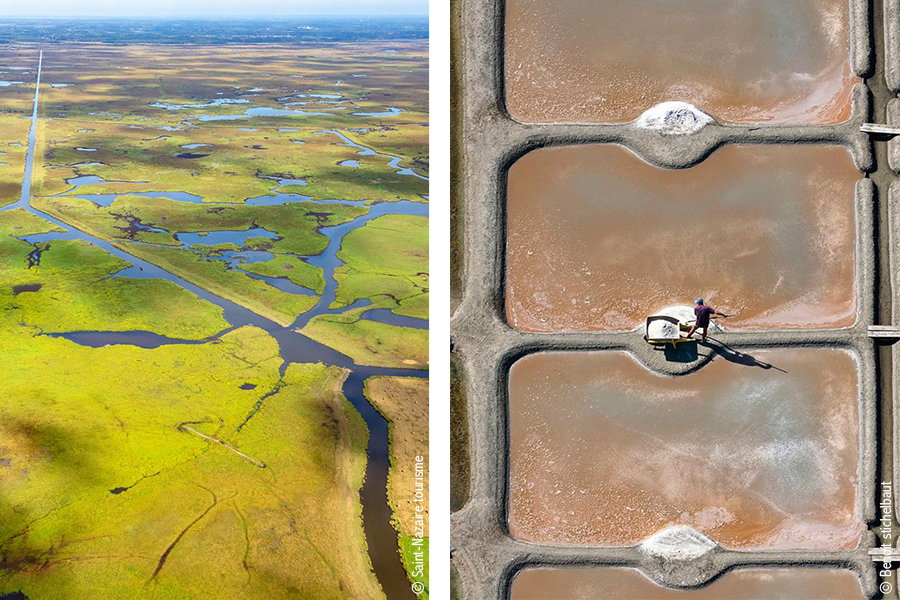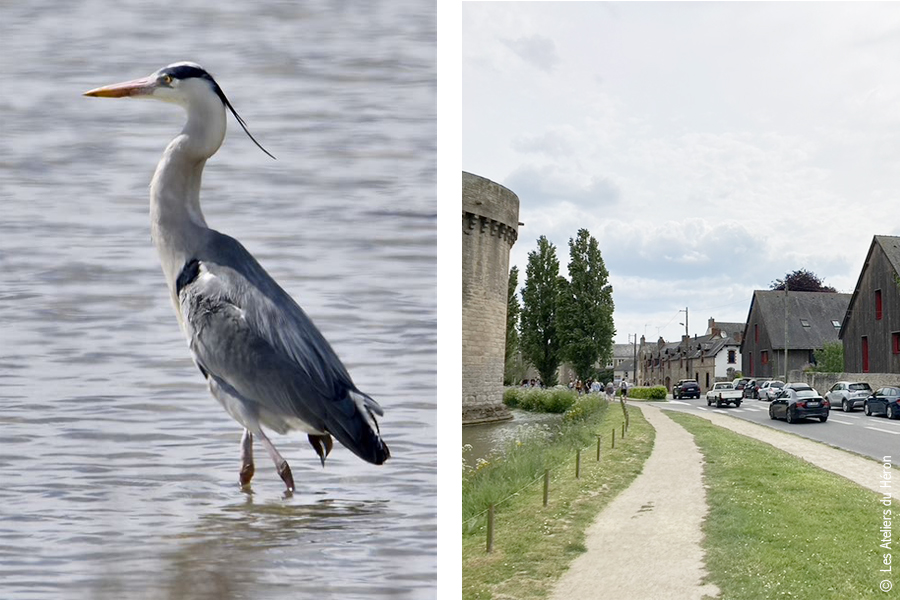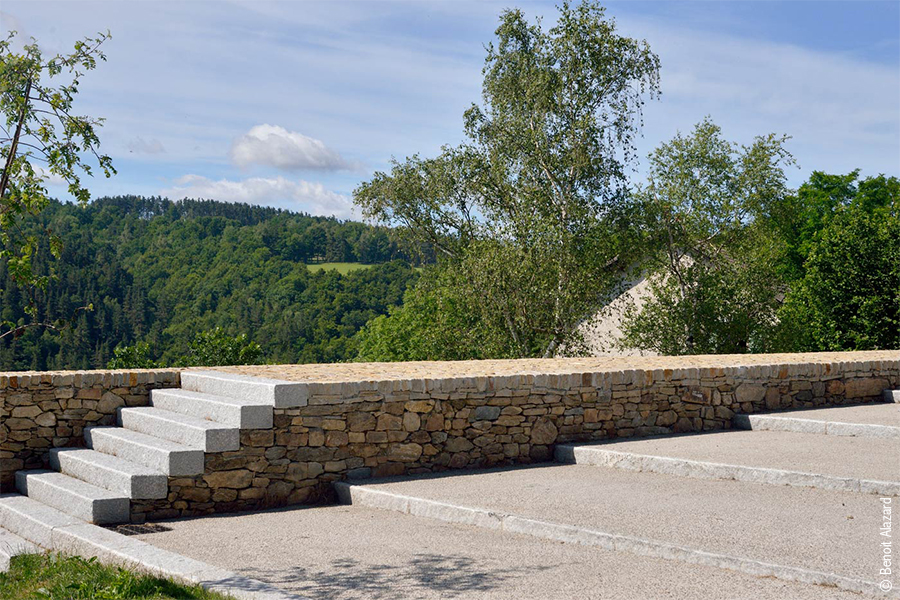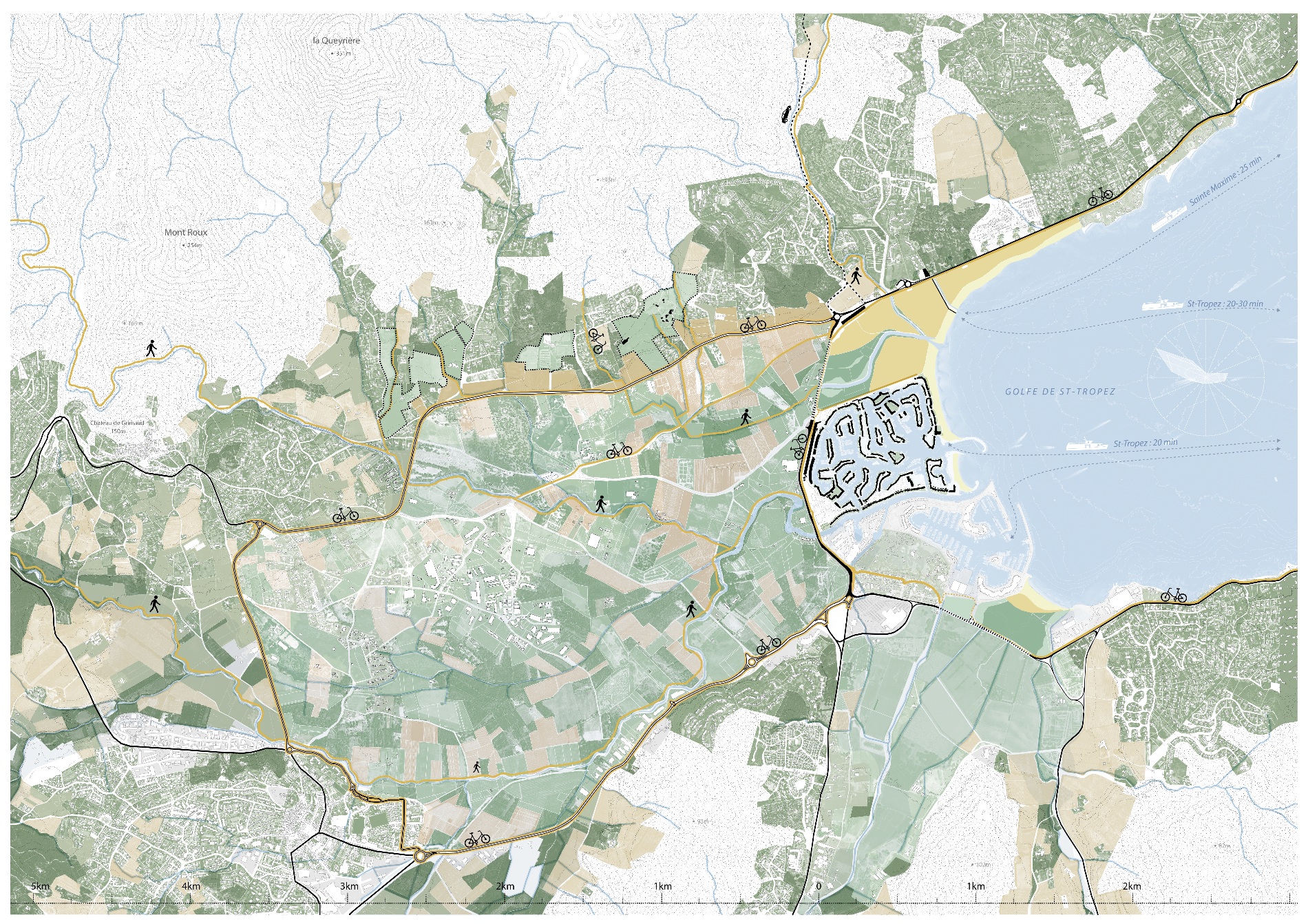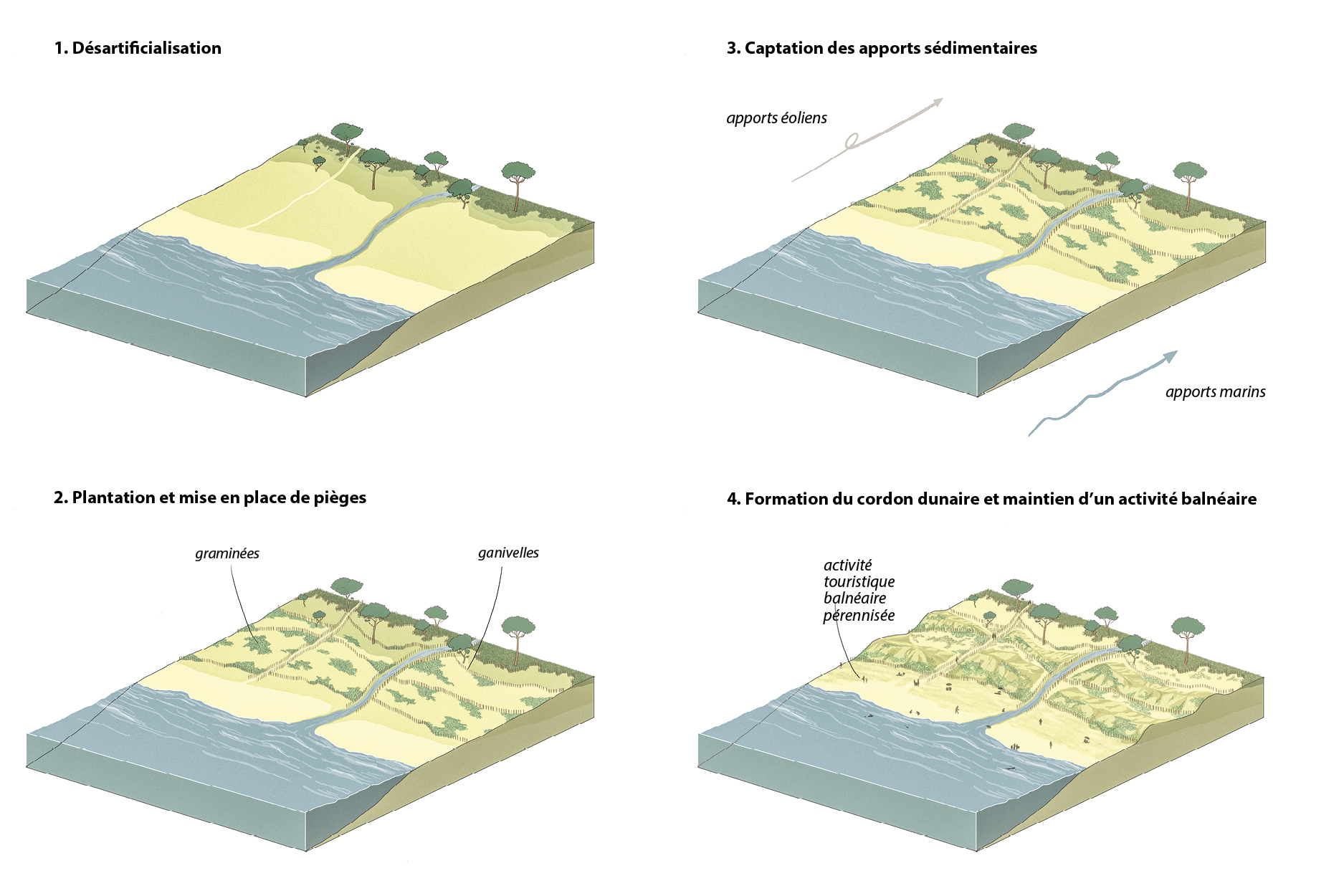le héron qui voulait voir l'océan
Guérande (FR) - Runner-up

TEAM PORTRAIT
VIDEO (by the team)
INTERVIEW
Click on the images to enlarge
1. How do you define the main issue of your project in relation with the theme “Living Cities Imagining architecture taking care of the milieus”? And in which way do you think your project can contribute to an ecological and/or social evolution?
Environments change with the seasons. In Guérande, this means paying particular attention to the seasonal nature of the urban and architectural project. The landscape and hydrological aspects have structured our thinking, materialised in the project by the green and blue path running through the town. The uses of public and private spaces are designed to evolve, adapting to the high and low tourist seasons.
2. How did the issues of your design and the questions raised by the site mutation meet?
Guérande's attractiveness needs to be read on a regional scale. It will be strengthened in the long term by its strategic position in regard to marine submersion issues. As a result, the city will become a refuge place, set to grow and densify. In order to protect the living spaces, a detailed analysis of the existing places has been conducted on the town scale. This enabled us to identify green spaces and grey spaces (areas that have already been sealed off). Therefore, areas are studied according to their potential to accommodate, or not, to programmes and needs in a harmonious way across the territory.
PROJECT:



Our team first met on a project to protect the Mediterranean coastline, as part of an Architectural and Urban Planning course. As for, city redevelopment and densification project, are the main missions of our professional activities for several years. The teachings of Christophe Delmar and Frédéric Bonnet, as well as the work on “revelatory urbanism”, follow us and inspire us on a daily basis.
SITE:
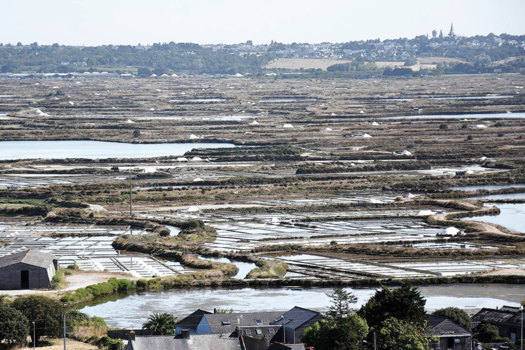


For us, benefiting of the Europan experience to develop an innovative territorial project, supported by shared design processes and alternative governance schemes, would be an ideal follow-up to this competition. An urban project requires constant dialogue with local stakeholders, as well as long-term phasing. Various players have a role to play in the future of the site, starting with local community, extending to the wider stakeholders. We also intend to work by discussing with the other Europan winning teams on the site.
REFERENCES:



After studies in different architecture schools in France, we met at the Architecte Urbaniste course at the school of Paris-Est. We then moved on to offices with complementary skills in architecture, landscape, socially responsible real estate. After a first Europan experience in 2021, our team continued to work together to bring complex, virtuous projects to a successful conclusion.
6. How could this prize help you in your professional career?
While our appetite for urban, architectural and ecological issues is already reflected in our professional activities, the Europan project responds to our desire to emancipate ourselves and confront our personal convictions with the reality of a project. We see this prize as the culmination of our fruitful collaboration, which is set to continue, firstly between the three of us, and then by opening up the spectrum to all kinds of new ideas and enriching encounters.
TEAM IDENTITY
Legal status:
Team name:
Average age of the associates: 28 years old
Has your team, together or separately, already conceived or implemented some projects and/or won any competition? if so, which ones?
Together :
● Etude DSA – Port-Grimaud (https://www.calameo.com/books/003968688d5b5defc45f0)
● Europan 16 - Auneuil
Robinson Mangematin :
● Architecture Decathlon Ideas – Competition 2017 : Winning project (in collaboration with Marine Beuerle)
WORKS:



